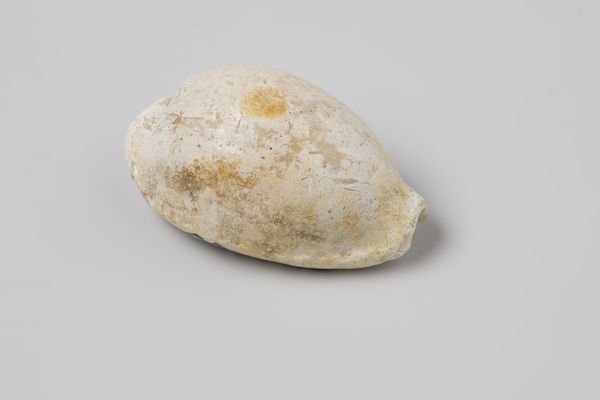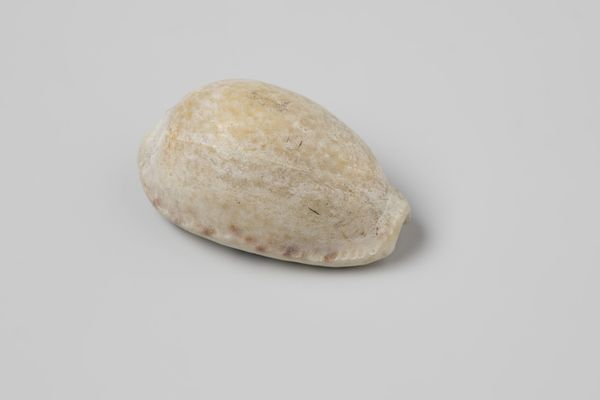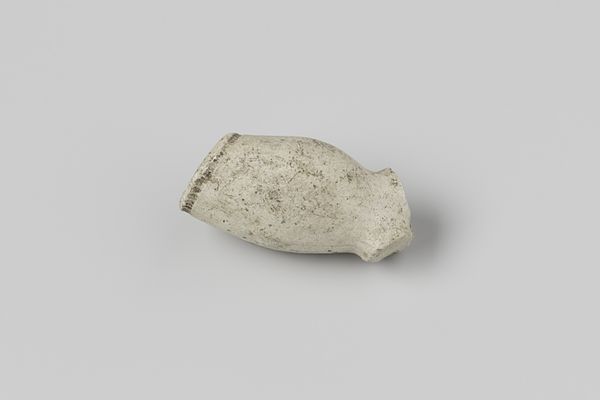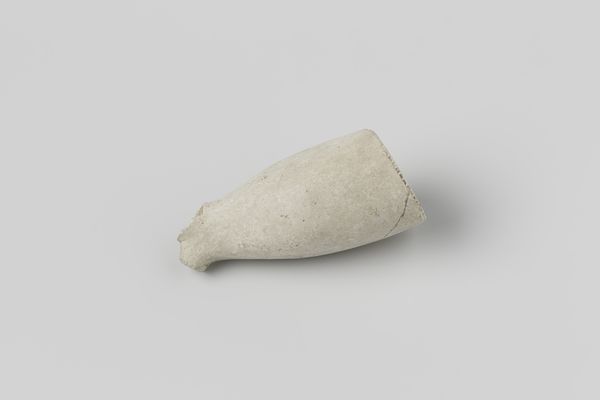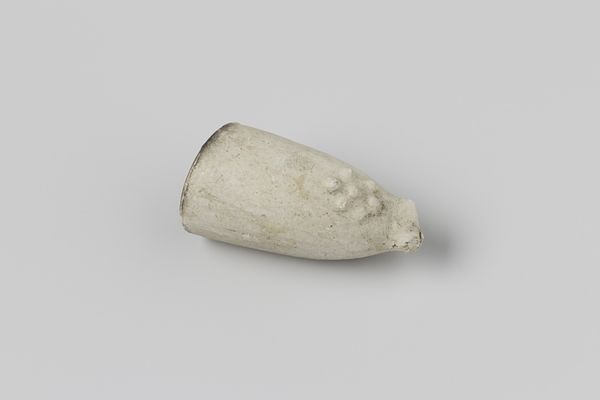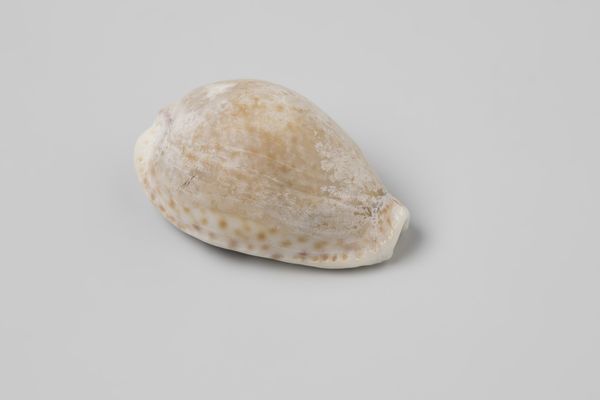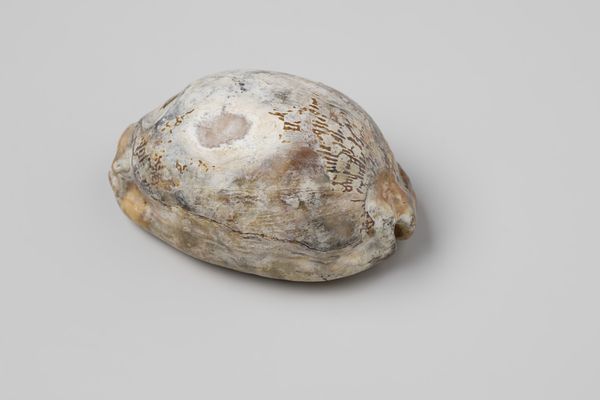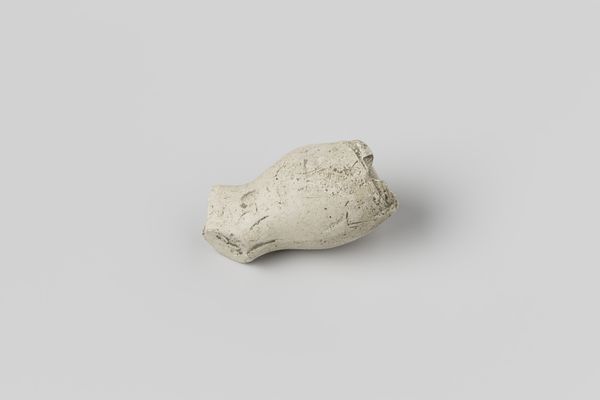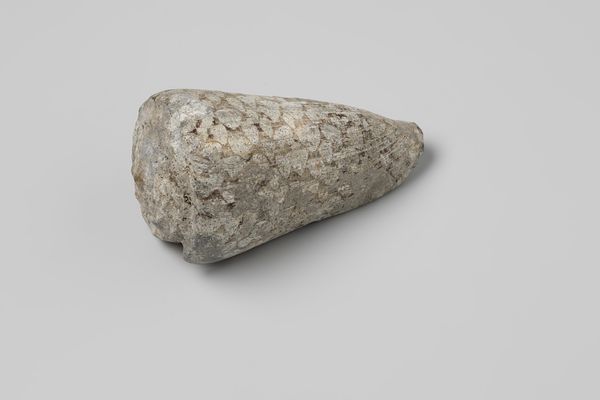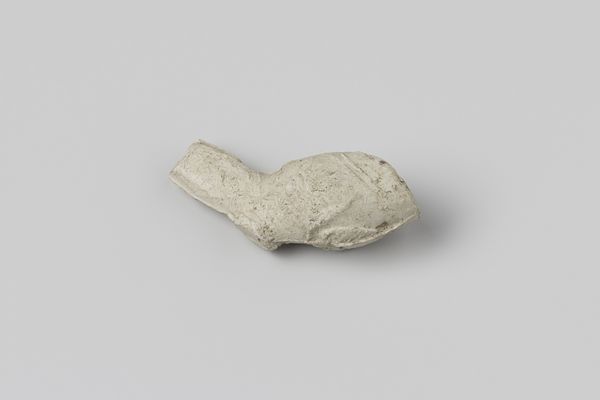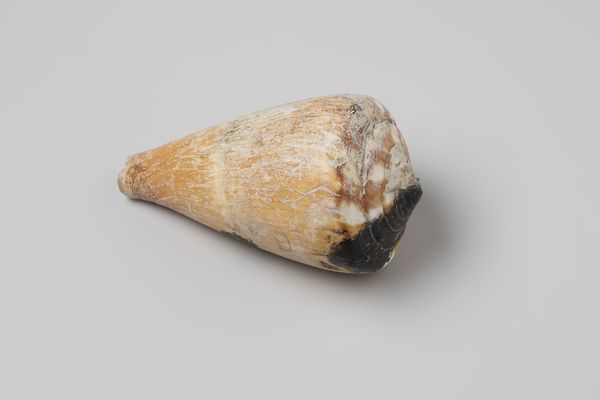
Kauri shell from the wreck of the Dutch East India ship Witte Leeuw before 1613
0:00
0:00
photography
#
studio photography
#
product photograph merchandise
#
product studio photography
#
product shot
#
circular oval feature
#
3d printed part
#
photography
#
white focal point
#
graphic design product photography
#
product photography
#
nature closeup
Dimensions: length 3.1 cm, width 2.2 cm, height 1.8 cm
Copyright: Rijks Museum: Open Domain
Curator: This is a kauri shell recovered from the wreck of the Dutch East India ship Witte Leeuw, which sank before 1613. Editor: It looks rather humble, doesn’t it? Not what you'd expect from a maritime tragedy, almost ghostly in its pallor and texture. Curator: Ghostly is an interesting term, considering its history. The Witte Leeuw sank after a battle with Portuguese ships, a dramatic moment in the struggle for control of maritime trade routes. These shells, and others like them, were likely cargo, intended as currency or trade goods in Asia. Editor: Currency! So much more than just a shell then. Kauri shells were symbols of wealth and power in many cultures. Their shape, reminiscent of the vulva, connected them to fertility, life, and abundance. This simple object carried immense symbolic weight, making trade about more than just materials. Curator: Precisely. And thinking about its material reality, it endured a shipwreck, years underwater. The alteration of its surface speaks volumes about the forces it has undergone – the chemical reactions, the marine life clinging to it, the sheer pressure. Its current appearance is the outcome of a long, arduous material journey. Editor: So it's transformed by the sea, mirroring its role as a talisman transformed by cultural significance. Both material and symbolic values reshaped through history! I wonder if the sailors understood its layered meanings... Curator: Perhaps some did. We often underestimate the knowledge circulating amongst sailors and traders. These weren’t just shells to them, but portable commodities, cultural tokens with tangible worth in distant markets. The act of diving, collecting, transporting – these involved a complex web of labor and global exchange. Editor: Right, the commodification of symbolic meaning, traveling by ship...It's both sad and compelling that something so small could be central to conflict. Makes you wonder about the human stories intertwined within the shell's pearly layers. Curator: Indeed. It’s a potent reminder that objects are never just objects, but condensed histories, laden with meaning, labor, and the echoes of human lives. Editor: Well put. This kauri shell is definitely more intriguing now than I first thought.
Comments
No comments
Be the first to comment and join the conversation on the ultimate creative platform.
